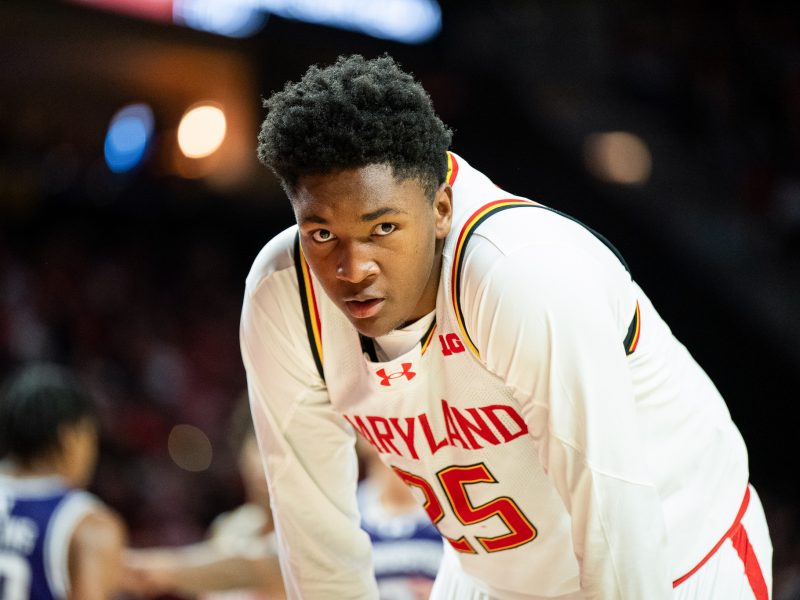Nothing felt further to Maryland men’s basketball against Michigan State than the approximately 22-foot traverse between the basket and the three-point line. Only three of the Terps’ 22 high-arcing attempts ended with the ball falling through the rim.
Maryland almost got away with it.
After a stagnant start saw the Terps trail 15-0 a few minutes after the opening tip-off, coach Kevin Willard’s squad rallied a few minutes into the second half with a 22-6 run that staggered the Spartans into a four-point deficit.
Then Michigan State did what Maryland could not: Light up the scoreboard from behind the arc.
Buoyed by crucial threes from Jaden Akins and Tyson Walker after the Terps’ scoring rush, Michigan State never looked back and quelled Maryland’s late comeback attempt.
[Maryland men’s basketball’s winning streak snapped by Michigan State, 63-58]
Walker and Joey Hauser led the Spartans in points and went a combined six for 11 from three, a mark miles better than Maryland’s three for 22. Michigan State coach Tom Izzo told his team to “play desperate” against the Terps, and that best reflected in the Spartans’ three-point defense.
While Michigan State is one of the top defensive teams from three-point range in the country and the best in the Big Ten, Maryland found other ways to make up ground.
Expected value, a statistical method that measures points scored per shot taken, paints a more straightforward picture of the Terps’ struggles against the Spartans. Each two-point shot against Michigan State produced roughly three times the expected value of an attempted three-pointer.
For comparison, Maryland’s expected value for a two-point shot throughout this season was about 1.1 compared to 0.9 for a three-point shot. Willard explained why the Terps might’ve kept kicking it out to the arc even when it wasn’t working.
“[Michigan State] did a really good job of doubling the post,” Willard said. “I thought we got some good looks … [it’s] part their good defense and [part] our bad shots.”
[Maryland men’s basketball solidified its standing in Big Ten with strong stretch]
Maryland’s inconsistent three-point shooting has handicapped the Terps in a few of their defeats this season. In Maryland’s three defeats in which it shot under 15 percent from behind the arc, it took more than 20 attempts, which made a major difference as the Terps lost the three games by a combined 11 points.
All three of those losses came away from home. Maryland’s recent blowout of Minnesota and close loss to then-No. 1 Purdue on the road had dispelled some worries inflated by the Terps’ 4-7 record in neutral or away games.
“Being on the road sometimes, being in a very good environment, sometimes you just get sucked into [taking bad three-point shots],” Willard said. “It’s very hard to win on the road in this league. It’s very difficult.”
Throughout the season, the Terps have been able to survive without stellar three-point shooting with a 6-4 record in games shooting under 25 percent from three. The occurrence is a sharp retort of a Maryland team that was reliant on long-range shooting in its 8-0 start. The Terps shot more than 35 percent from three in five of those eight wins.
The Big Ten’s second worst three-point shooting team, fresh off of one of its worst performances from distance this season, will likely have to reconcile its relationship with the arc to keep pace in the competitive race for the top spots in the conference standings.



